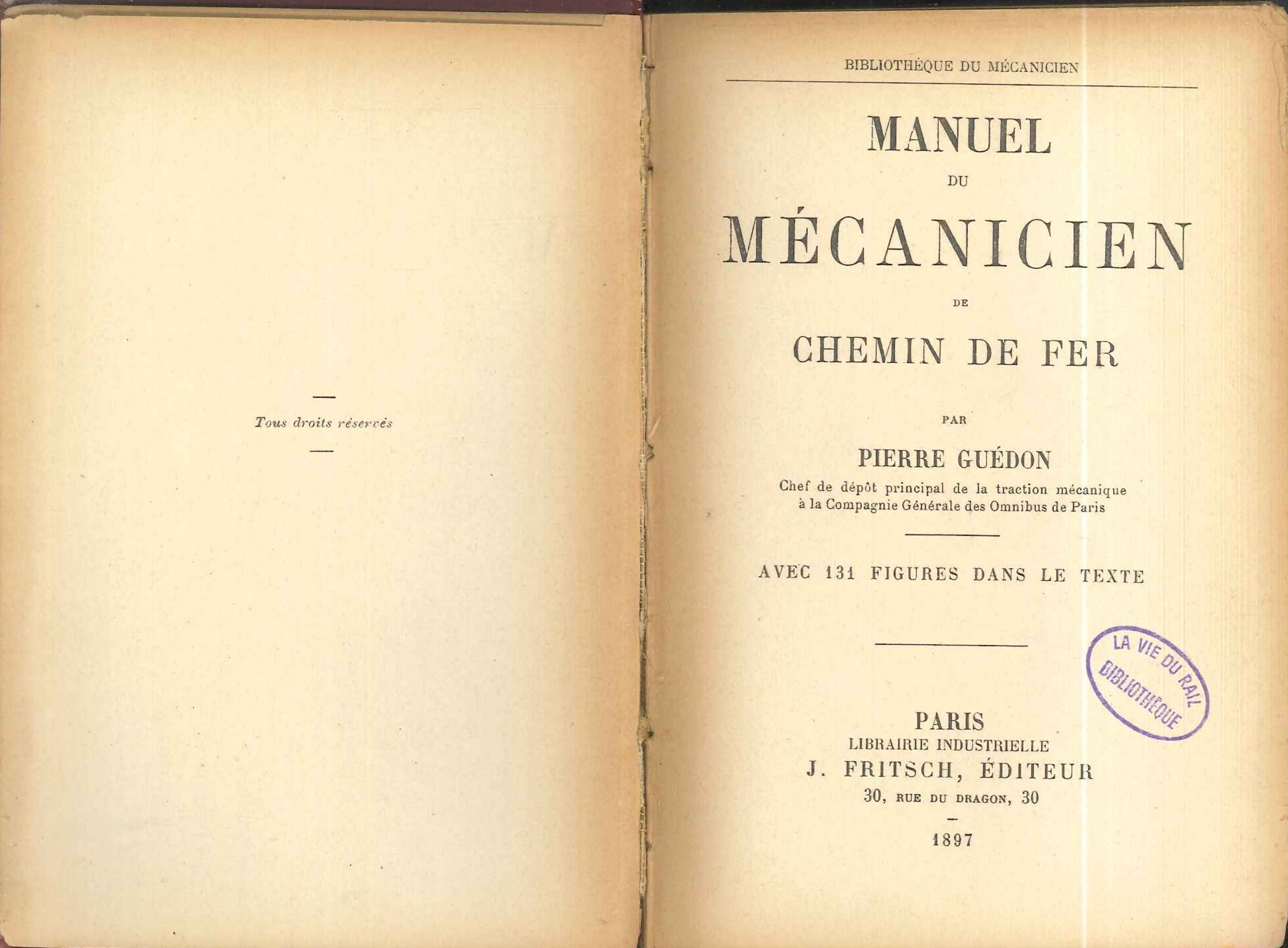
Ouvrage : Manuel du mécanicien de Chemin de Fer, Pierre Guedon, 1897


We are pleased to present the work of Eugène Flaman, a railway engineer and graduate of the École Centrale des Arts et Manufactures (class of 1865), who spent a long career with the Compagnie des chemins de fer de l’Est from 1866 to 1908 as a design, equipment and traction engineer.
6 janvier 1842
Birthplace: Moulins-sur-Céphons (Indre)
1865
Graduate of the École Centrale des Arts et Manufactures
1866
Joined Compagnie des Chemins de fer de l’Est on March 1.
A student at the Ecole Centrale, Eugène Flaman earned the title of engineer des arts et manufactures. This title, created in France in 1862, is the first recognized engineering degree.
He spent his entire career with Compagnie des Chemins de Fer de l’Est as a research engineer in the traction department, where he joined on March1, 1866. His first position is shown on his career page (below). He was appointed ” draughtsman at Ateliers de la Villette ” at the suggestion of the Company’s director on December 19, 1866, and after approval by the Board of Directors on December 27, 1866.
Chevalier de la Légion d’Honneur before he was hired by the Compagnie des chemins de fer de l’Est, his file details the various positions held by Eugène FLAMAN during his career, as well as his salary, increments and bonuses.
After 42 years of service, he retired on November 1, 1908, and was named Honorary Senior Engineer of the Compagnie, with an end-of-career allowance of 20,000 francs.
Well-known in railway circles for his numerous patents and technical improvements, Eugène FLAMN left his mark on history with two major inventions.
The Flaman double-barrel boiler, which broke the world rail speed record in June 1890 (144 km/h between Sens and Montereau), and the Flaman, a locomotive speed indicator-recorder.
The prototype was mounted on a Crampton locomotive N° 604, which in June 1890 reached 144 km/h between Montereau and Sens . Although Crampton locomotives were in service on various British networks, it was in France that they were most successful. They were mainly manufactured for the Compagnie des chemins de fer de l’Est.
They are also used on the Compagnie des chemins de fer du Nord network. Following trials in 1890, Cie de l’Est had twelve high-speed, twin-axle, bogie locomotives built in its Epernay workshops, fitted with the Flaman boiler tested on Crampton locomotive no. 604.
These locomotives, weighing 50 tons empty and 56 tons in running order, can tow a 24-car train between Paris and Troyes (distance 167 kilometers, maximum gradients: 6 millimeters) at an average running speed of 75 kilometers per hour. At a speed of 100 kilometers, the towed load can reach 140 tons (Manuel du mécanicien de chemin de fer, by Pierre Guédon, 1897).
The Flaman Indicator-Recorder is a device designed to :
– enable mechanics to read the machine’s speed on a graduated dial at any time;
– automatically record the value of this speed on paper;
– make it possible to find, on the same paper, the time at which the machine crossed a given point on the route, and what the speed was at that moment.
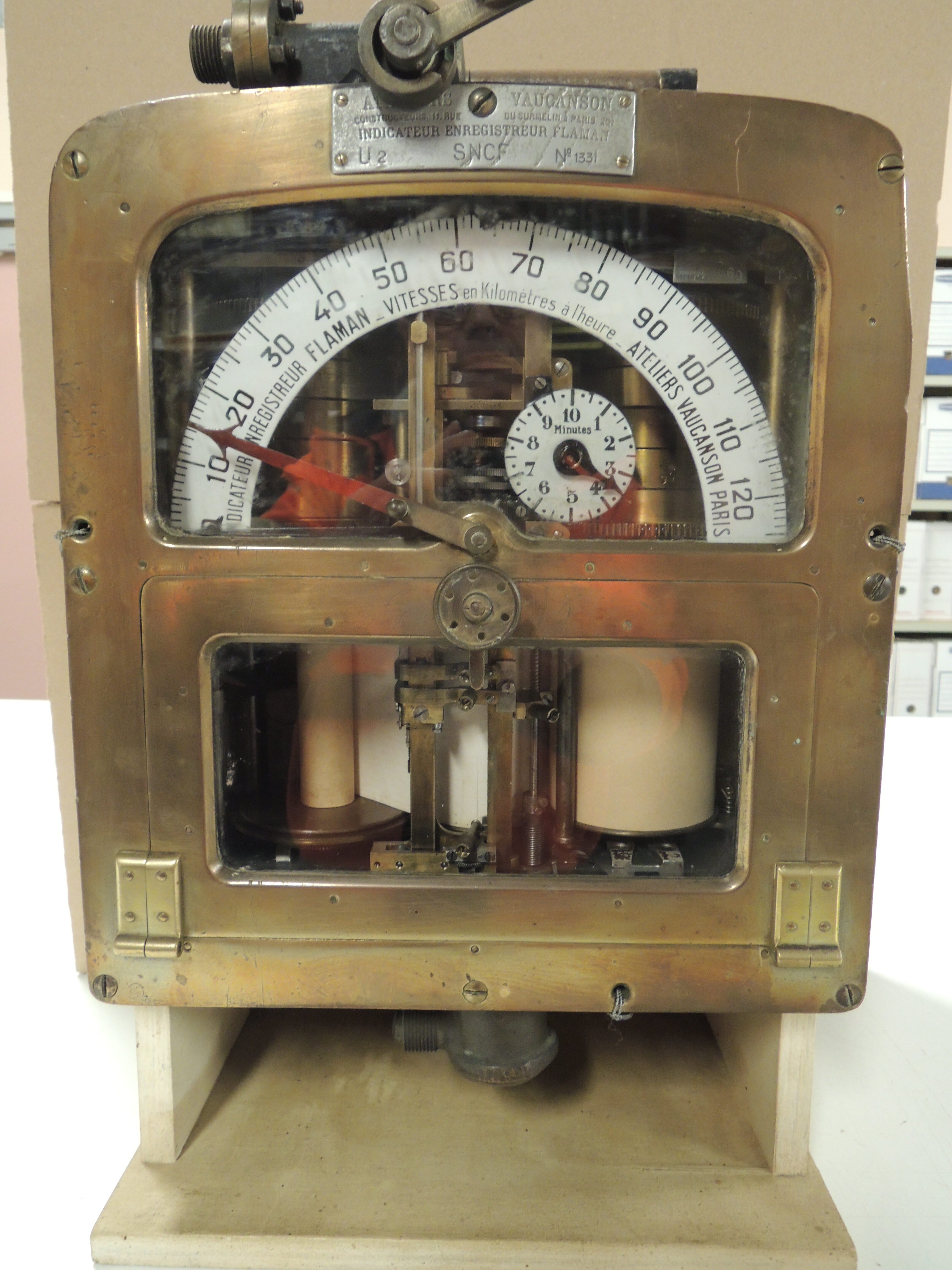
Materials: brass, cast iron, paper, copper, enamel.
Measurements: length in cm 30; thickness in cm 15; height in cm 36, weight 36kg
Inscriptions: maker’s mark, plate on top: Ateliers Vaucanson Constructeurs 11, rue du Surmelin à Paris 20e, Indicateur Enregistreur Flaman U2A SNCF N° 1331.
In fact, these are locomotive “snitches” or “black boxes” which record the speed and times at which trains pass through stations and signals, more than 750 times an hour. Installed in the lead locomotive, in the driver’s cab, the device is calibrated to withstand any turbulence. Its clockwork mechanism, set to Greenwich meridian time, is independent of the rest of the device and therefore indicates perfectly regular time. The information gathered is plotted in the form of a diagram on a long roll of paper. which can measure up to 20m.
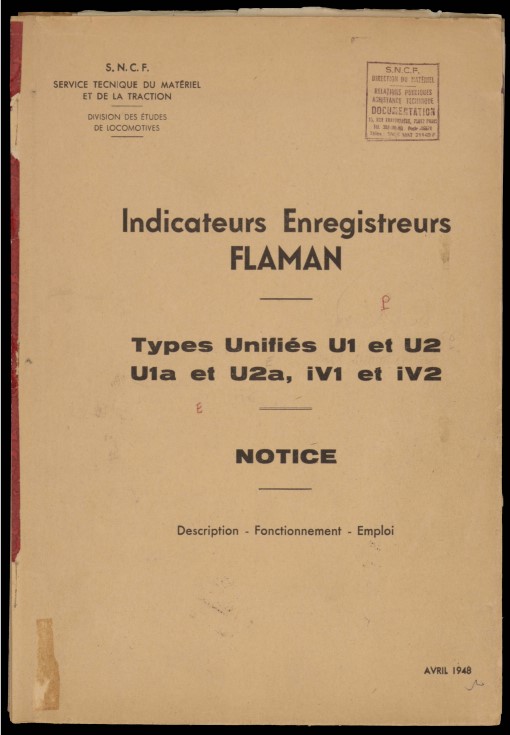
Notice : indicateur-enregistreur, Types Unifiés U1 et U2 U1a et U2a, iV1 et iV2, Flaman. Avril 1948
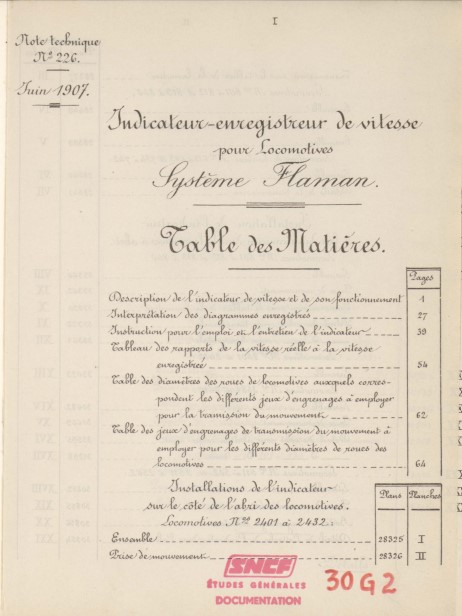
Note technique : indicateur-enregistreur de vitesse pour locomotives, Flaman, 1907
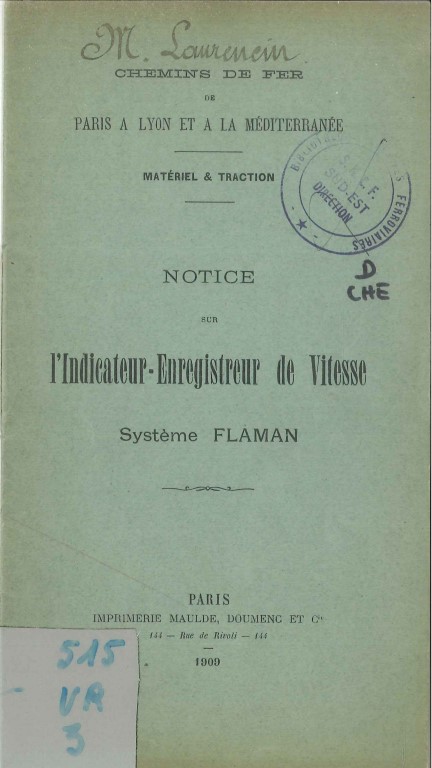
Notice : indicateur-enregistreur de vitesse, Flaman, 1909
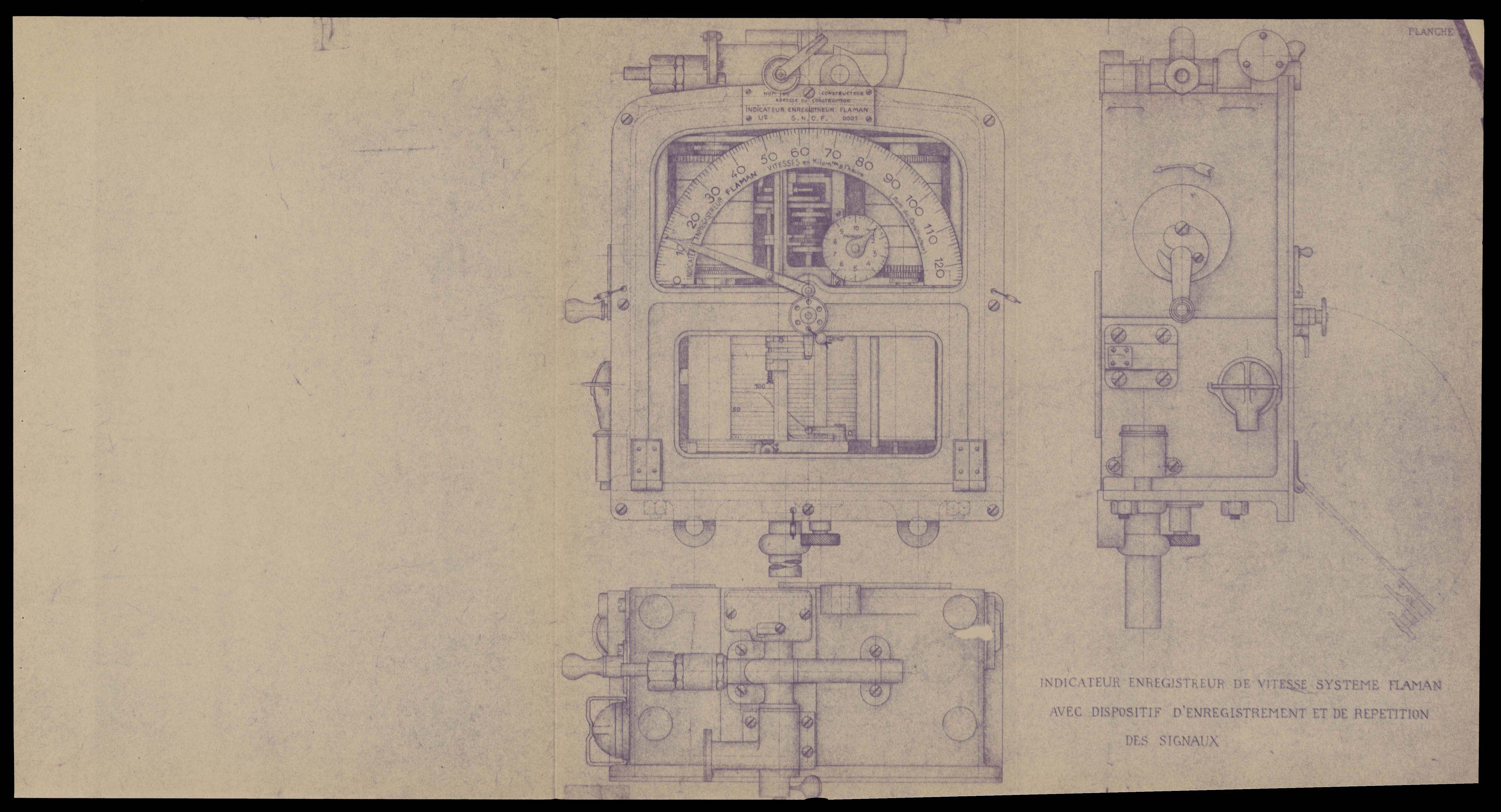
Schéma : dispositif d’enregistrements et répétition des signaux, Flaman, 1948
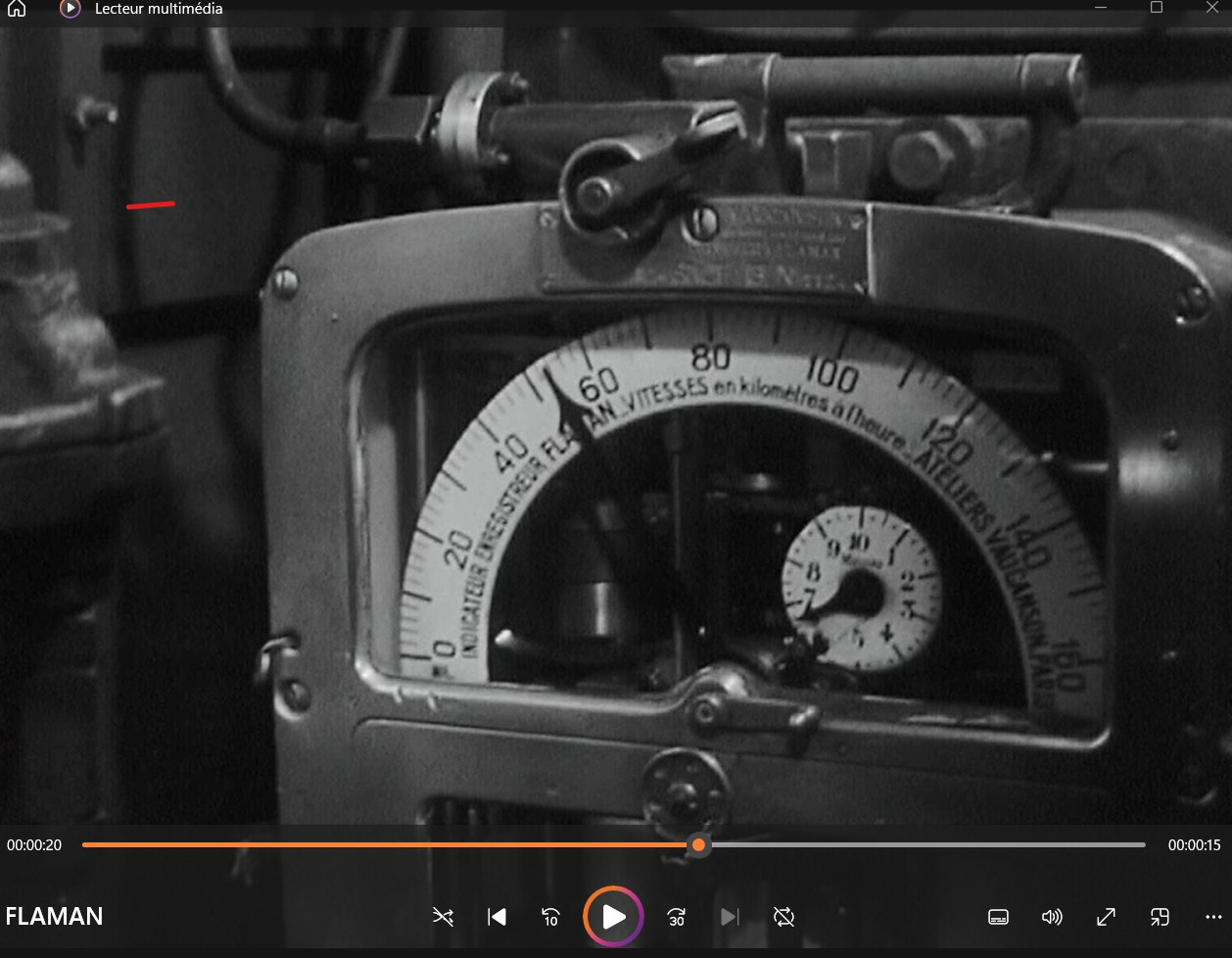
Film : locomotive Pacific 231, système Flaman, 1969
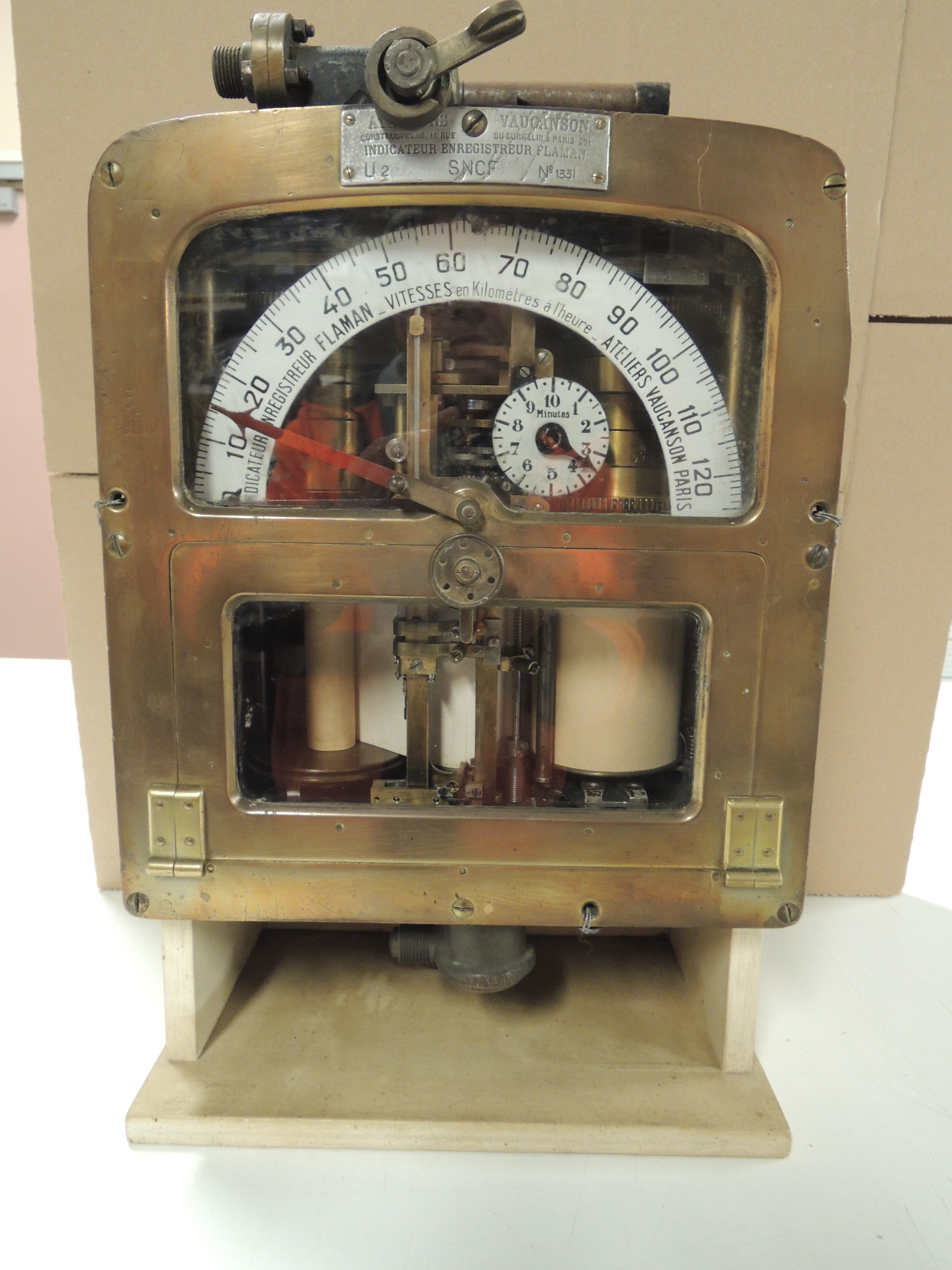
Photo : indicateur-enregistreur, dit “Flaman” n°1331
1892
He receives the Légion d’Honneur from President Carnot for his inventions.
1908
Retirement.
1935
Death at Rainfreville (Seine Maritime).
International Exhibition Paris 1878 – silver medal
Exposition universelle Paris 1889 – gold medal
Brussels World’s Fair 1897 – honorary diploma
Exposition universelle Paris – 1900 – bronze medal
1905 Liège World’s Fair – honorary diploma
Milan International Exhibition 1906 – first prize
Manuel du mécanicien de chemin de fer, by Pierre Guédon, 1897 (SARDO CNAH – 0531VR30)
Flaman Indicator Recorders – Unified Types U1 and U2 U1a and U2a, iV1 and iV2 – Manual (description – Operation – Use) – April ,1948 (SARDO CNAH – 6019)
Flaman recorder for locomotives Système Flaman- Technical Notice n°226 – June 1907 (SARDO 30G2)
Notice sur l’indicateur enregistreur système Flaman, Paris, 1909 (SARDO CNAH 515VR3)
Notice sur l’indicateur enregistreur système Flaman, Paris, 1931 (SARDO CNAH 515VR4)
Notice on the Flaman system indicator-recorder, Paris,
Eugène Flaman career sheet (SARDO CNAP – FLAMAN EUGENE_0198BZ0001_085).
Louis Salomon career sheet (SALOMON LOUIS_0198BZ_0001_208)